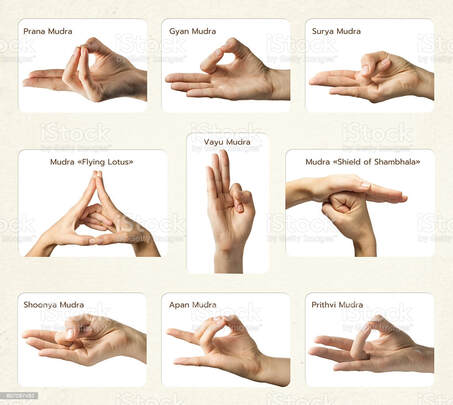|
A mudra is a sign, symbol and gesture, movement or position of which affects the flow of pranic energy of the body. It also refers to a corresponding psychic attitude. The word mudra also means “seal” or short cut or short circuit – indicating an actual physiological basis for the effects of hand gestures by uniting certain neurological reflex points which terminate on the surface of the hands. Mudras’ action begins at the subtle energy level, balances chakras, heals emotionally and acts on the physical body. Mudras are used in conjunction with pranayama. Thumb symbolizes humanity (finite & limited). Index finger represents God, sea of cosmic energy (infinite & eternal). Five fingers of the hand represent the five ether elements of nature - Little finger represents water, Ring finger is for earth, Middle finger for the ether, Index finger for air and Thumb denotes fire. There are a large number of mudras. Mudras should be held at least for 15 minutes to 45 minutes in a day’s time. A few mudras are discussed as under:
Reference: A systematic Course in the Ancient Tantric Techniques of Yoga and Kriya – by Swami Satyananda Saraswati
2 Comments
Susann Long
10/5/2023 02:26:06 pm
O ..The Sense Of Reverie/
Reply
Esteban
12/27/2023 02:21:29 pm
Would lov eto learn more
Reply
Leave a Reply. |
Archives
July 2024
Categories |

 RSS Feed
RSS Feed